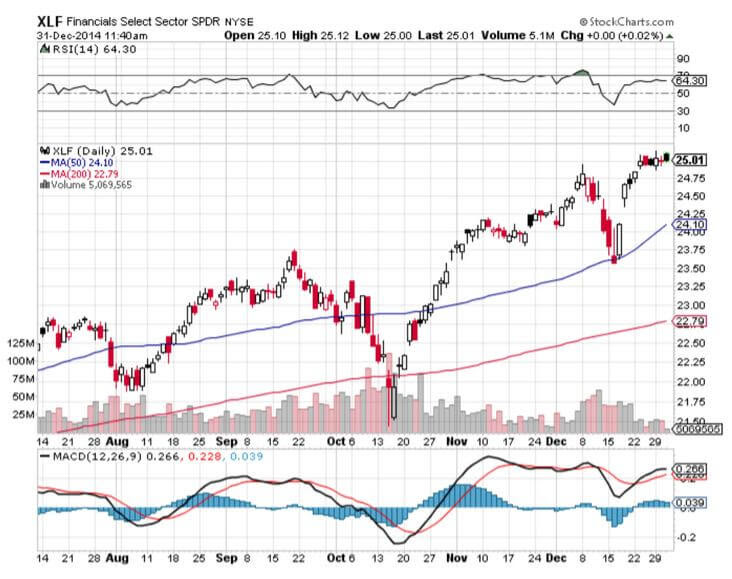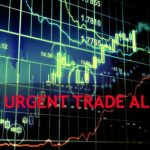Follow Up to Trade Alert - (BAC) December 31, 2014
As a potentially profitable opportunity presents itself, John will send you an alert with specific trade information as to what should be bought, when to buy it, and at what price. This is your chance to ?look over? John Thomas? shoulder as he gives you unparalleled insight on major world financial trends BEFORE they happen.
the-money vertical call spread at $0.88 or best
Opening Trade
expiration date: February 20, 2015
Portfolio weighting: 10%
Number of Contracts: 114
You can buy this put spread anywhere within $0.88-$0.92 and have a reasonable expectation of making money on this trade.
Warning! With a low price and a large number of contracts, this trade is particularly sensitive to your commission rate. So if you are overpaying your broker, now is the time to have a conversation with them and negotiate your rates down. It's easier than you think, especially on spread trades.
The $16 and $17 strikes also make this a nice set up in the options. I expect markets to rally in the New Year, for financials to take the lead, and (BAC) should drift up with it. If the ten-year Treasury market (TLT) holds at a 2.10% yield and moves up to a new, higher range, it will be a sure thing.
Keep in mind that the options market is highly illiquid now, so don't hold me to these prices. They are ballpark estimates, at best.
If you want to be even more aggressive, you can buy outright the (BAC) April, 2015 $19 calls for 45 cents. Any move in the shares above $19.45 will bring exponential returns. If the Treasury bond market (TLT) finally breaks, this will happen.
On the other hand, if you want to play it safe, you can buy shares in the financials basket ETF, the Financials Select Sector SPDR (XLF). For a link to a fuller description of this fund, where (BAC) is a major component, please click here at http://www.sectorspdr.com/
If I am right about interest rates remaining flat or rising next year, then financials have to be at the absolute top of any "BUY" list.
Bank of America (BAC) certainly was the chief whipping boy of the financial crisis. Since 2008, it has paid out more than $50 billion in fines and lawsuit settlements for every transgression under the sun.
After getting a bail out from the US Treasury, it was forced to cut its dividend payment to a token one cent. Do any Google search on the company and you are inundated with a flood of bad news.
All that is now ancient history. The entire banking industry is now moving into the sweet spot in the economic cycle. This is because rising interest rates mean that they will be able to charge more for loans, while their cost of funds (deposits and equity) remains low. These rising spreads fall straight to the bottom line.
Now with the bank's Torturer-in-Chief, US Attorney General Eric Holder, announcing his retirement, the way is clear for better days ahead.
With the 30-year bull market in bonds now at an end, substantially higher rates in the near future are now included in virtually every economic forecast out there. Since the beginning of 2014 the ten-year Treasury yield has collapsed from 3.05% to as low as 2.32% at he end of August, pummeling bank shares.
What happens next? They go from 2.32% back up to 3.05%, possibly by yearend, then a lot more. Bank shares will ride on the back of this bull.
The jungle telegraph is now ringing with the prospect of a dividend hike by the company, currently at a lowly four cents. We may get the good news as soon as the next reporting period on October 14. The implications of such a move are broad.
If it pulls this off, it is only because of renewed confidence by the markets in the improved financial condition of the company. After several capital raises and the liquidation of the wreckage of the 2008 crash, US banks are now the healthiest in history, with balance sheets of bedrock stability.
Ahem, they are also too big to fail, again.
To get the dividend yield on the shares up to industry standard of 2.5%, the company really needs to raise its dividend to 42 cents. It certainly has the cash flow to do this. In 2013, (BAC) reported net income of $11.4 billion, more than four times to amount needed to cover such a payout.
Needless to say, this is all great news for the share price. The prospective return of increasing amounts of capital to shareholders should suck in new and wider classes of shareholders. It won't be just about hedge fund punters anymore. Respectable, large, and long term holding institutions will be in there as well.
Take a look at the charts below, and it is clear that such a move is underway. (BAC) broke out from the end of a classic triangle formation, which traditionally resolves itself to the upside. New post crash highs beckon.
You can find more dry powder in the chart for the Financials Select Sector SPDR ETF (XLF), which clearly rejected a complete breakdown at long-term trend support in early February.
The best execution can be had by placing your bid for the entire spread in the middle market and waiting for the market to come to you. The difference between the bid and the offer on these deep in-the-money spread trades can be enormous.
Don't execute the legs individually or you will end up losing much of your profit. Spread pricing can be very volatile on expiration months farther out.
If the price of this spread has moved more than 5% by the time you receive this Trade Alert, don't chase it. Wait for the next one. There are plenty of fish in the sea.
Here are the specific trades you need to execute this position:
Sell short 114 February, 2015 (BAC) $17 calls at.........$1.32
Net Cost:.........................
Potential Profit: $1.00 - $0.88 = $0.12
(114 X 100 X $0.12) = $1,368 or 1.37% profit for the notional $100,000 portfolio.





